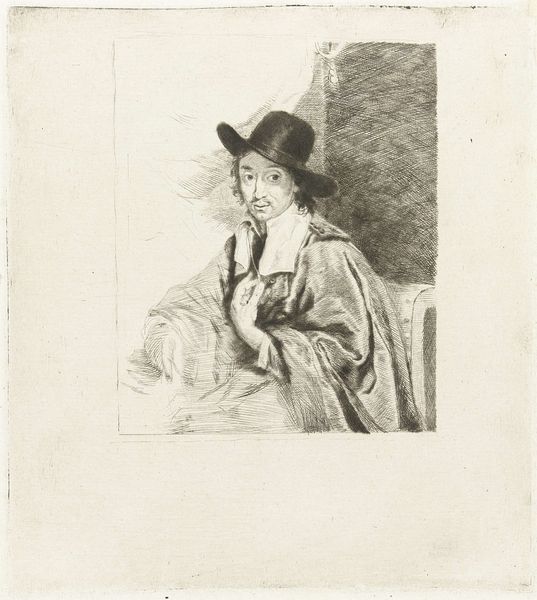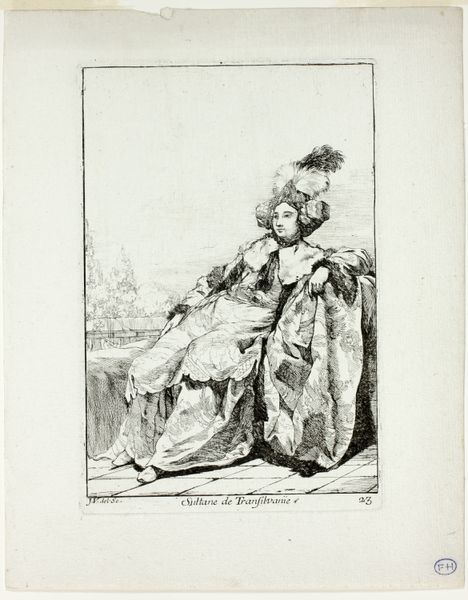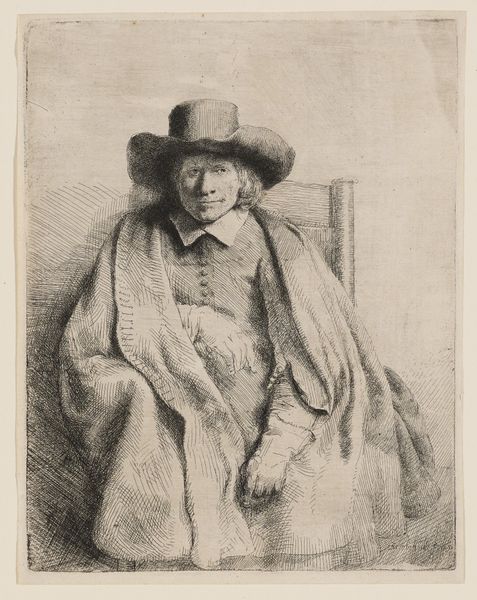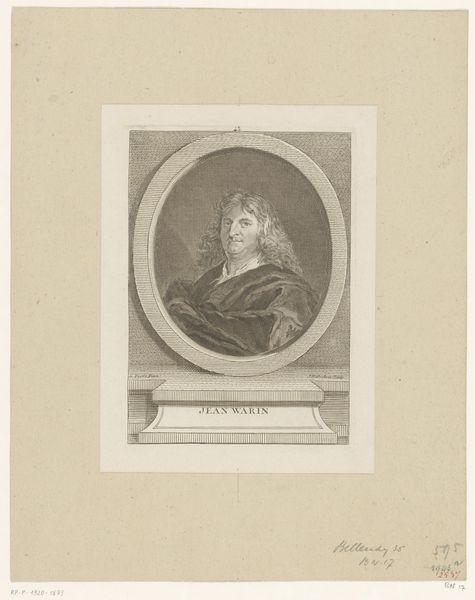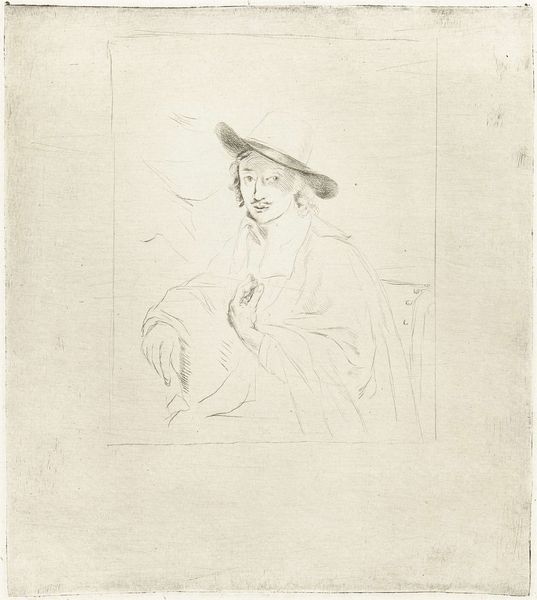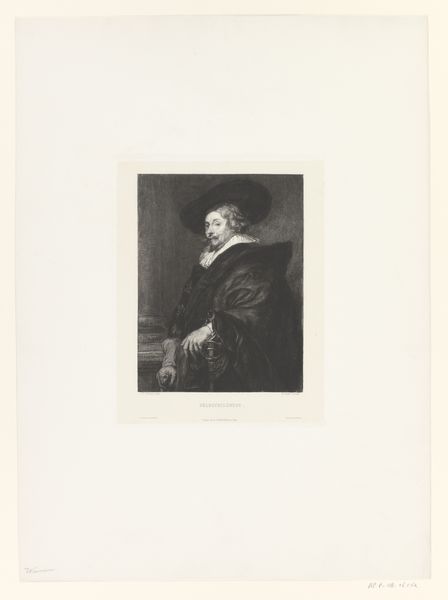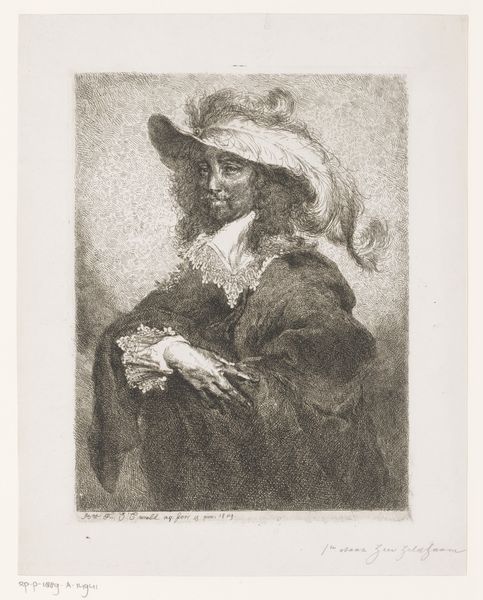
Dimensions: height 193 mm, width 172 mm
Copyright: Rijks Museum: Open Domain
Louis Bernard Coclers created this engraving, “Portret van de schilder Adriaen van Ostade,” sometime in the late 18th or early 19th century. Engraving is an intaglio printmaking technique, where the image is incised into a metal plate, and then filled with ink to make a print. The fine lines, achieved through the use of a burin, are what give this portrait its character. The density of marks create tone, while their direction models form. In Coclers’s time, the process of engraving was intensive, involving many hours of skilled labor. Consider the implications of this effort: it suggests the high status of the sitter, but also the economic realities of image production during the period. Unlike a unique painting, engravings were produced in multiples, and their distribution formed a network of cultural and economic exchange. Understanding the materials and processes behind this print helps us to appreciate the relationship between art, labor, and consumption in 18th-century Europe.
Comments
No comments
Be the first to comment and join the conversation on the ultimate creative platform.
